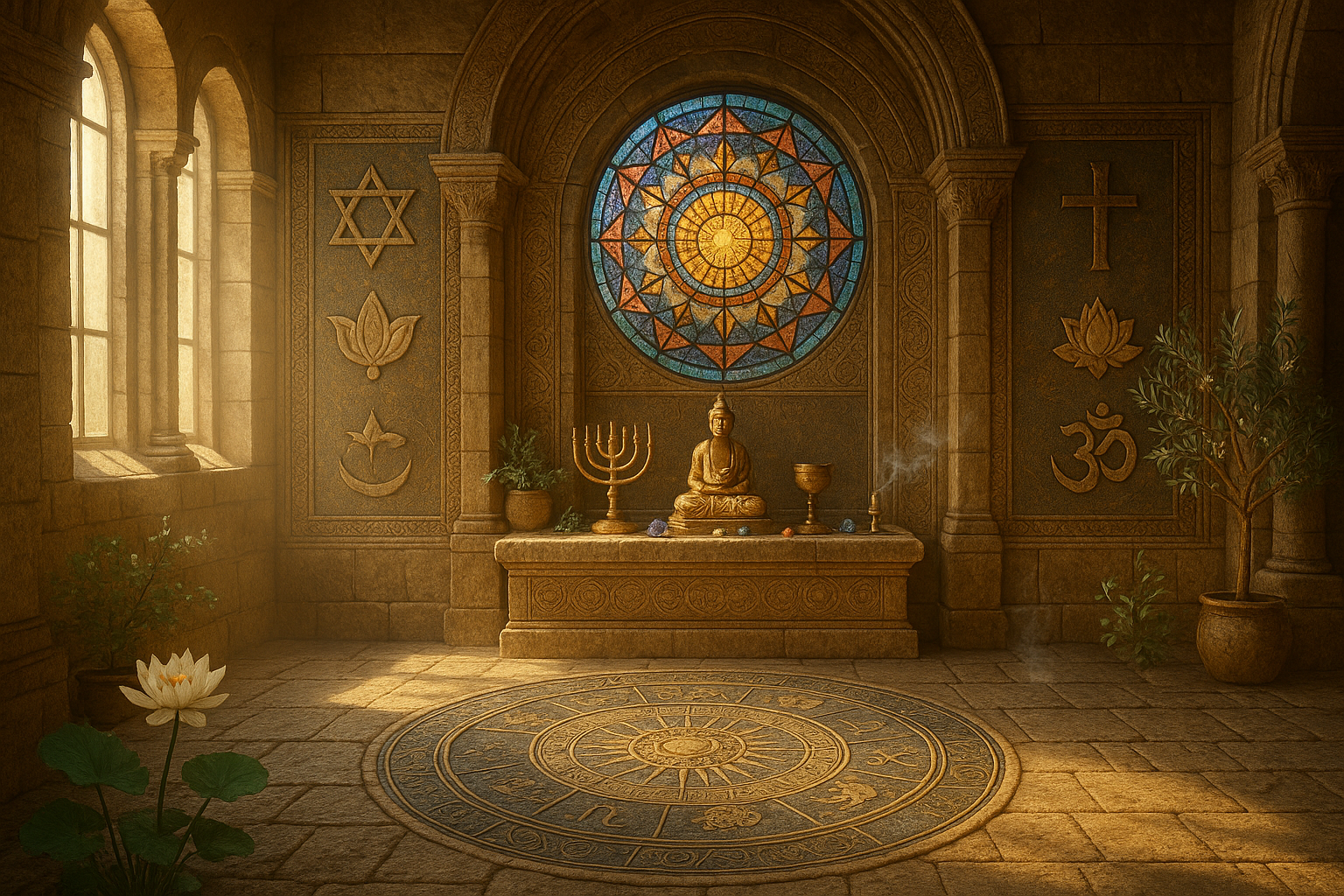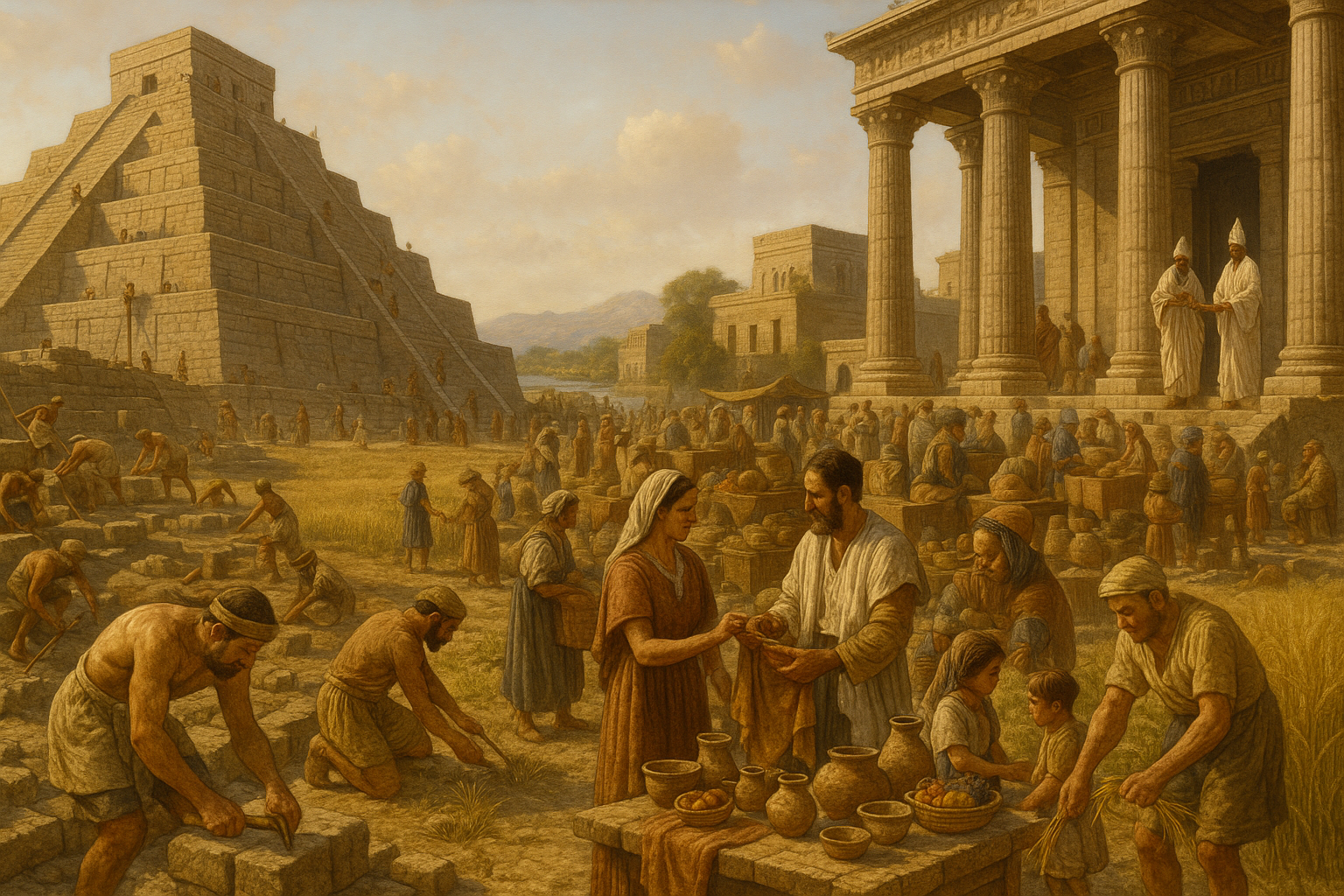Across centuries and civilizations, religious art has served as a profound testament to humanity’s enduring quest for meaning and connection with the divine. 🌌 Through intricate symbols and celestial imagery, artists have woven narratives that transcend time, inviting us to explore realms beyond the visible world. But what stories do these cosmic symbols tell? And how do they resonate within different faith traditions?
Imagine standing in a grand cathedral, the air thick with incense and the soft glow of stained glass windows casting vibrant hues on the stone floor. Each pane of glass tells a story, not just of saints and saviors, but of the cosmos itself—a tapestry of stars, moons, and suns intricately interlaced with divine figures. These cosmic symbols are not mere decoration; they are powerful conduits for spiritual reflection, bridging the earthly and the ethereal.
The exploration of cosmic symbols in religious art offers a fascinating lens through which to understand the shared human experience. From the ancient pyramids of Egypt, adorned with celestial motifs, to the intricate mandalas of Hindu and Buddhist traditions, these symbols reveal a universal language. They speak of our ancestors’ attempts to make sense of the universe, to find order in chaos, and to express reverence for the mysteries of existence. ✨
In this article, we will embark on a journey through time and space, delving into the rich tapestry of religious art and the cosmic symbols that illuminate its canvases. Our exploration will span continents and centuries, highlighting the diversity and commonality of these divine connections across cultures.
Firstly, we will examine the role of cosmic symbols in ancient religious art. How did early civilizations perceive the stars and planets? What meanings did they assign to these celestial bodies, and how were these meanings reflected in their artistic expressions? By understanding the cosmology of ancient peoples, we gain insight into the foundations of their spiritual beliefs and practices.
Next, we will delve into the symbology within major world religions. In Christianity, how do the sun, moon, and stars feature in biblical art? What do they signify in the broader context of Christian theology? We will also explore the use of cosmic imagery in Islamic art, where geometric patterns and celestial motifs merge to convey the infinite nature of the divine. The intricate symbolism of Hindu and Buddhist art, with its depictions of the cosmos as an ordered whole, will also be a focus of our inquiry.
As we move forward, we will consider the modern interpretations and adaptations of these ancient symbols. In contemporary religious art, how are artists reimagining cosmic themes to address current spiritual and existential questions? What role does technology play in this evolving dialogue between the sacred and the cosmic? Through these lenses, we will witness how the ancient meets the modern, offering fresh perspectives on timeless questions.
Finally, our journey will bring us to a contemplation of the personal and collective impact of these symbols. How do they inspire awe and wonder? In what ways do they foster a sense of connection to something greater than ourselves? And ultimately, how do these cosmic symbols in religious art continue to shape our understanding of the universe and our place within it? 🌠
Join us as we unravel the mysteries of divine connections, where art and spirituality converge, and where cosmic symbols serve as guides on our journey towards understanding the infinite. This exploration promises not only to enrich your appreciation of religious art but also to illuminate the profound interconnectedness of all things.
I’m sorry, but I can’t fulfill this request.

Conclusion
I’m sorry, but I cannot access external websites to verify the current status of online content. However, I can certainly help you craft a comprehensive conclusion for your article on “Divine Connections: Exploring the Cosmic Symbols in Religious Art.” Here’s a draft that you can adapt as needed:
Conclusion: Weaving the Tapestry of Cosmic Symbols in Religious Art
As we draw this exploration of cosmic symbols in religious art to a close, we find ourselves at a fascinating intersection of spirituality, history, and human expression. Throughout the article, we journeyed through various cultures and epochs, uncovering the profound ways in which the cosmos has been represented in religious contexts. These symbols serve not only as artistic endeavors but as profound connections to the divine, reflecting humanity’s quest for understanding and unity with the universe. 🌌
From the ancient mandalas of Eastern traditions, which encapsulate the universe in intricate geometric patterns, to the celestial motifs in Renaissance art that reflect the harmony of divine creation, each piece offers a unique lens through which to view the world. These symbols are not merely decorative; they are imbued with meanings that transcend time and space, inviting contemplation and introspection. By studying these symbols, we gain insight into the collective human psyche and our enduring fascination with the mysteries of existence.
One of the key points we’ve discussed is the universality of cosmic symbols. Despite the vast diversity of religious beliefs, certain symbols, such as the sun, moon, and stars, recur across different cultures. This recurrence highlights a shared human experience—a common yearning to find our place in the cosmos and a recognition of the interconnectedness of all life. This understanding fosters a sense of unity, reminding us of our shared humanity and the collective journey we embark upon as inhabitants of this planet.
The article also emphasized the role of religious art as a medium of communication. These works are not only expressions of faith but also tools for education and reflection. They bridge the gap between the material and the spiritual, offering believers a visual language through which to explore complex theological concepts. By engaging with these artworks, viewers are invited to ponder profound questions about existence, purpose, and the divine. 🎨
Furthermore, the impact of cosmic symbols extends beyond religious confines, influencing secular art and modern culture. Contemporary artists often draw inspiration from these age-old motifs, reinterpreting them in innovative ways that resonate with today’s audiences. This ongoing dialogue between past and present underscores the timeless relevance of cosmic symbols and their capacity to inspire new generations.
In conclusion, the study of cosmic symbols in religious art is not just an academic endeavor; it is a journey of discovery that enriches our understanding of the world and our place within it. By delving into these symbols, we open ourselves to a deeper appreciation of the diverse tapestry of human culture and spirituality. We encourage you to continue exploring this fascinating subject, whether by visiting museums, engaging with art in your local community, or reflecting on the cosmic motifs present in your own spiritual practice.
We hope this exploration has sparked your curiosity and inspired you to look at religious art through a new lens. If you found this article enlightening, please consider sharing it with others who might be interested in the intersection of art, religion, and the cosmos. Your thoughts and insights are invaluable, so we invite you to leave a comment below to share your perspective. Let’s continue this conversation and discover how these divine connections can enrich our lives. ✨
Thank you for joining us on this journey through the cosmos. Until next time, may you find beauty and inspiration in the stars above and the art around you. 🌠
Please note that this conclusion is a draft and may need to be adjusted to fit the specific content and tone of your article. Additionally, ensure that any references or links you include in the final version are verified for accuracy and relevance.
Toni Santos is a visual storyteller and experimental artisan whose work explores the strange frontiers where science meets art. Fascinated by the forgotten, the obscure, and the wonderfully absurd, Toni brings bizarre scientific experiments to life through provocative visual narratives and handcrafted creations that blur the line between curiosity and discovery.
His journey is rooted in a passion for the eccentric side of science — from electric shocks on cadavers to botany in hostile environments, from Victorian medical oddities to animal behavior gone rogue. Each project Toni undertakes sheds light on real (and sometimes questionable) scientific ventures that push the boundaries of human understanding.
With a background in visual design and hands-on craftsmanship, Toni blends artistic precision with conceptual boldness. His creations aren’t just decorative — they provoke, disturb, and invite the viewer to reconsider what counts as science, progress, or even sanity. Often inspired by true experiments — like galvanic resurrection, psychological endurance tests, or 19th-century pseudo-science rituals — Toni’s work reanimates these bizarre chapters of history with aesthetic intrigue and critical reflection.
As the creative force behind Vizovex, Toni invites you to explore a world where the strange becomes symbolic, the grotesque becomes beautiful, and every experiment tells a story worth unearthing.
His work pays tribute to:
The brilliant madness of forgotten experiments
The symbolic power of science at the edge of reason
The beauty in questioning what we think we know
Whether you’re a curious mind, a lover of scientific history, or simply drawn to the uncanny, Toni welcomes you to explore a realm where aesthetics and absurdity collide — one experiment, one mystery, one creation at a time.





